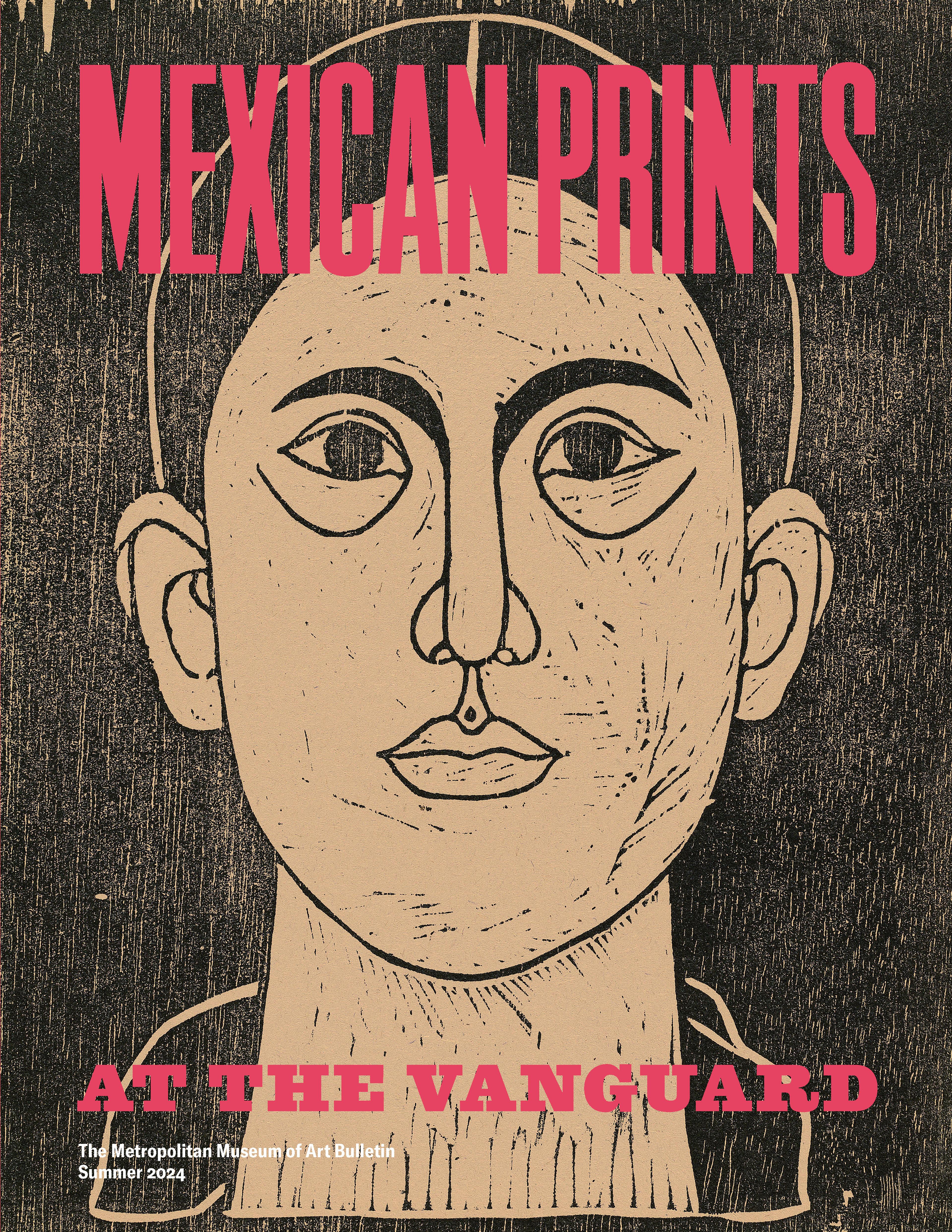The Revolutionist (a man holding a rifle viewed from behind)
Tamayo is one of Mexico’s best-known artists. His woodcuts from the 1920s and early 1930s are unlike anything created by his contemporaries. They represent a highly personal response to the postrevolutionary artistic agenda set by the government. The Revolutionist was created after he returned to Mexico in 1929 and began teaching at the National Art School. There, he connected with the radical ¡30 30! group, which rejected traditional art education.
Tamayo es uno de los artistas más célebres de México. Sus xilografías de la década de 1920 y principios de la de 1930 son radicalmente distintas de las creaciones de sus contemporáneos. Representan una respuesta muy personal a la agenda artística posrevolucionaria establecida por el Gobierno. Tamayo creó El revolucionario cuando regresó a México en 1929 y empezó a dar clases en la Escuela Nacional de Bellas Artes, donde se vinculó al grupo radical ¡30 30!, que rechazaba la educación artística tradicional.
Tamayo es uno de los artistas más célebres de México. Sus xilografías de la década de 1920 y principios de la de 1930 son radicalmente distintas de las creaciones de sus contemporáneos. Representan una respuesta muy personal a la agenda artística posrevolucionaria establecida por el Gobierno. Tamayo creó El revolucionario cuando regresó a México en 1929 y empezó a dar clases en la Escuela Nacional de Bellas Artes, donde se vinculó al grupo radical ¡30 30!, que rechazaba la educación artística tradicional.
Artwork Details
- Title: The Revolutionist (a man holding a rifle viewed from behind)
- Artist: Rufino Tamayo (Mexican, Oaxaca 1899–1991 Mexico City)
- Date: ca. 1929–30
- Medium: Woodcut on Japan paper
- Dimensions: Sheet: 12 in. × 9 7/16 in. (30.5 × 24 cm)
Image: 8 3/8 × 5 7/8 in. (21.3 × 15 cm) - Classification: Prints
- Credit Line: Gift of Jean Charlot, 1931
- Object Number: 31.91.33
- Rights and Reproduction: © 2025 Artists Rights Society (ARS), New York
- Curatorial Department: Drawings and Prints
More Artwork
Research Resources
The Met provides unparalleled resources for research and welcomes an international community of students and scholars. The Met's Open Access API is where creators and researchers can connect to the The Met collection. Open Access data and public domain images are available for unrestricted commercial and noncommercial use without permission or fee.
To request images under copyright and other restrictions, please use this Image Request form.
Feedback
We continue to research and examine historical and cultural context for objects in The Met collection. If you have comments or questions about this object record, please complete and submit this form. The Museum looks forward to receiving your comments.
